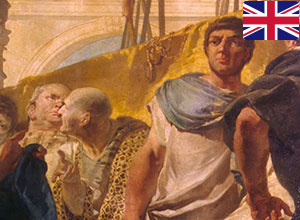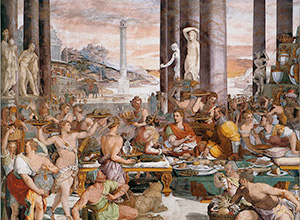Les circonstances Les circonstances du serment d’Hannibal remontent à 237 av. J.-C., lorsque son père, Hamilcar Barca, se préparait à partir pour l’Hispanie afin de consolider la puissance carthaginoise après la Première Guerre punique. Avant de quitter Carthage, Hamilcar, commandant militaire respecté, emmena son fils aîné Hannibal, alors âgé d’environ neuf ans, dans un temple […]
-
-
Note de lecture Le document intitulé “L’utilisation de la figure d’Héraklès par Hannibal” de Dominique Briquel analyse l’influence de la figure mythologique d’Héraklès (Hercule) sur la propagande d’Hannibal durant la deuxième guerre punique. Voici une synthèse approfondie des points clés abordés dans ce texte : Contexte général Hannibal, lors de ses campagnes contre Rome, a […]
-
Reading Note “Hannibal, the True History and the Deception of Zama” offers a novel reading of Hannibal’s story in light of recent archaeological findings that contradict the narrative of historiographers as to the chronology and even the veracity of reported events. Abdelaziz Belkhodja suggests that history was deliberately falsified by “historians” or rather propagandists, because […]
-
Meeting at Siga. In 206, Scipio had sailed from Cartagena in Spain to Africa, to meet Syphax in his capital Siga. He arrived there at the same time as Hasdrubal Gisco, who was travelling from Gades to Carthage and also wanted to meet the king. Hasdrubal Gisco was not one of Hannibal’s generals. In 215, he […]
-
-
-
Après la guerre, Hannibal est demeuré chef de l’armée et sept ans plus tard, il a été élu président de la République de Carthage. La Constitution carthaginoise prévoyait un mandat unique d’une seule année. En un an, Hannibal a stoppé la corruption et relancé une économie carthaginoise détruite par 16 ans de guerre et la […]
-
-
Au delà d'une désinformation destinée à contrer l'humiliation subie, c'est surtout la vision fédéraliste de Carthage, défendue avec vigueur par Hannibal, que Rome, à l'aube de sa domination sur le monde, se devait d'occulter car elle contenait les ferments d'une redoutable opposition à son impérialisme.










